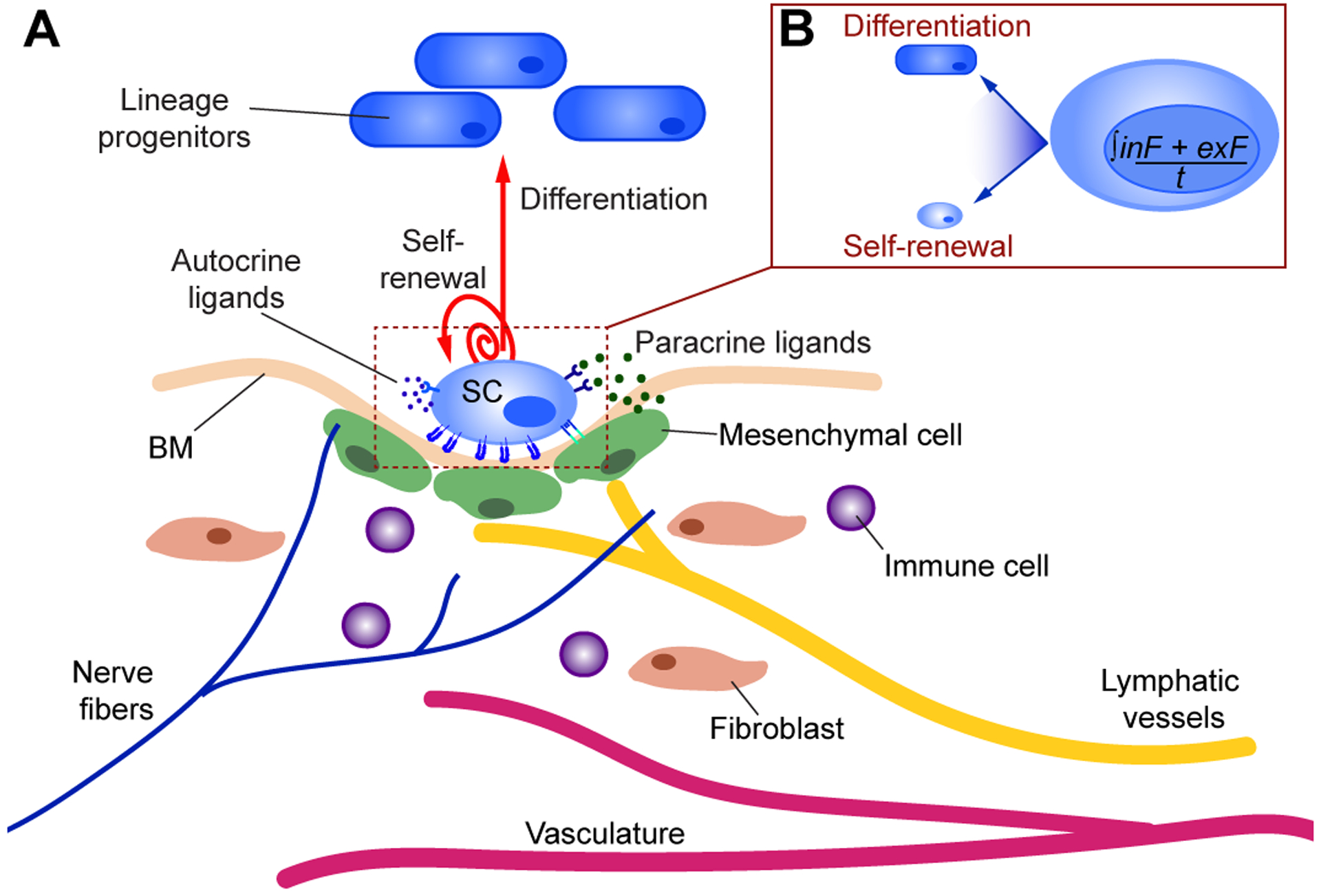Figure 1: SC niche microenvironment.

A) The SC niche involves a multitude of tissue specific cellular components (blood vessels, neurons, fibroblasts, immune cells), secreted factors (ex: growth factors, Wnts, BMPs, chemokines), and mechanical forces in part influenced by the extracellular matrix [basement membrane (BM)]. At homeostasis, the SC niche provides structural and trophic support, topographical information, and physical cues (soluble paracrine or autocrine signals, as well as mechanical stimuli), which influence SC functions and fate over time. While in some tissues SCs are continually active (such as in the epidermis, intestine, and lungs), in other tissues SCs are predominantly quiescent (as in muscle, and sweat glands), or undergo bursts of regenerative activity (as seen by HFSCs and lactating mammary glands). Local interactions are bi-directional, such that SCs not only receive signals from their surrounding niche cells but also transmit signals to their neighbouring cells. Moreover, increasing studies show that SCs can also directly shape their local niches, resulting in a unique localized micro-environment. B) SC behavior can therefore be summarized by the integration of intrinsic (inF) and extrinsic factors (exF) over time (t). How these complex and dynamic pathways are combined to result in the required SC fate-decision (differentiation or self-renewal) at any moment in time is currently an area of active investigation.
